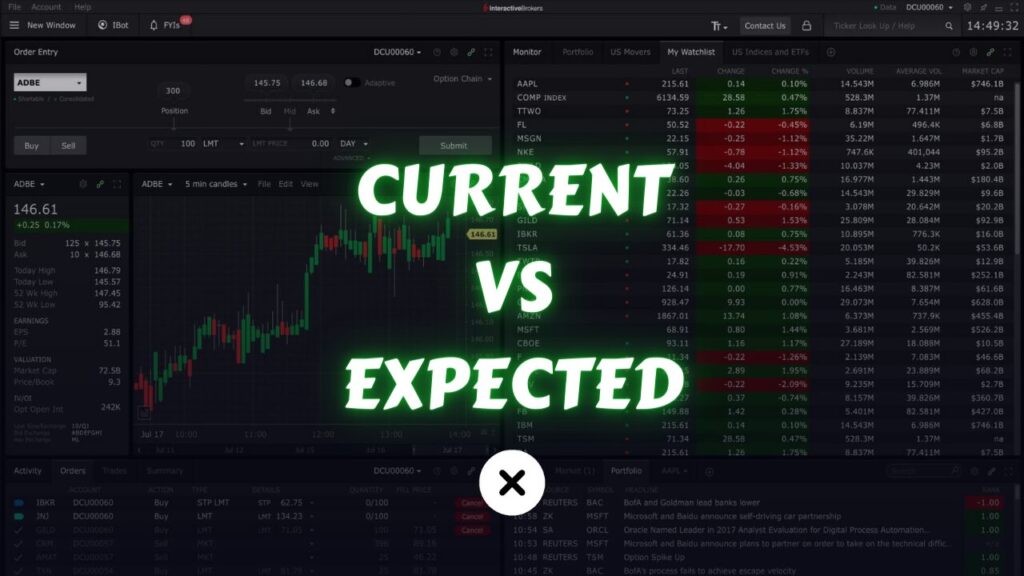
Passive portfolio management is an investment strategy that involves minimizing active decision-making and instead seeks to replicate the performance of a specific market index or benchmark. this is the simplest way to get in to investing.
The core idea behind passive management is rooted in the efficient market hypothesis, which posits that financial markets are highly efficient and that it is challenging for investors to consistently outperform the market over the long term. Therefore, instead of trying to beat the market through frequent buying and selling, passive investors aim to match the returns of a chosen market index.
The U.S. stock market usually provides an annual return of about 10%. Passive investors aim to capture that 10% each year simply by staying invested in the market.
Passive investors typically use index funds or ETFs as the primary vehicles for their investment strategy. These funds are designed to track the performance of a specific market index, such as the S&P 500 for U.S. stocks or the MSCI World for global equities. By investing in these funds, passive investors gain exposure to a diversified portfolio of assets that mirrors the composition of the chosen index.
How to invest in a passive portfolio?
As mentioned earlier, being passive means accepting what the market provides without trying to outperform it. One way to do this is by following an ETF like SPY, which represents the entire U.S. economy. Investing in it gives us exposure to the stock market.
When it comes to passive investing, we don’t need to stress about diversification because the ETF itself is already spread out across different things, following the index it’s linked to.
Asset Allocation for passive portfolio
Asset allocation is still important in passive investing. While you can invest all your money in an ETF like SPY, adding a bond ETF can help reduce the risk associated with the stock market and its ups and downs.
You shouldn’t include other ETFs focused on specific sectors like technology or finance because that would mess with the diversification. If you do that, you’re attempting to outperform the market, and that makes you an active investor, not a passive one. As a passive investor, you can only invest in index funds or ETFs that represent the entire market.
Apart from the stock market, you can invest in bonds, crypto, real estate, and commodities—these are different types of assets you can consider. and this is where asset allocation comes.
There are ETFs that represent these types of assets, and we have to decide what percentage of them should be in our portfolio.
Deciding to invest in these is entirely up to you. Many folks stick to the stock market, but it’s your choice, and there are both good and not-so-good things about it. you can learn more about it by learning different portfolios.
The key is to make sure the stock market ETF forms the most significant part of your portfolio, more than 50%. We’ll figure out the best allocation for all these different asset classes when we cover asset allocation in a separate post.
When it comes to bonds, if you’re younger, you need less of them in your portfolio, but if you’re older, you should have more. That’s because, over a long time, stocks tend to do better than many other types of assets. So, if you don’t need your money for a while, it’s better to have more stocks. you can learn more about this here.
I check out assets using finviz, ETFdb, and Messari for research. Then, I use Portfolio Visualizer to test how the portfolio would have performed in the past.
Once you decide your asset allocation, next thing you do is start investing.
Dollar cost averaging (DCA) for investing
Dollar cost averaging (DCA) is an investment strategy that involves regularly contributing a fixed amount of money into an investment over time, regardless of the asset’s price. This approach is designed to mitigate the impact of market volatility and reduce the risk associated with trying to time the market.
With dollar cost averaging, an investor commits to investing a specific amount of money at regular intervals, such as monthly or quarterly. This fixed investment amount remains constant, irrespective of the current price of the asset.
Since the fixed investment amount buys more shares when prices are lower and fewer shares when prices are higher, dollar cost averaging allows investors to automatically buy more units of an investment when prices are low and fewer units when prices are high. this gonna give an average price for your assets in the long term.
By consistently investing over time, dollar cost averaging helps to smooth out the impact of market fluctuations. This strategy reduces the risk associated with making a large, lump-sum investment at a single point in time, where the investor might be susceptible to unfavorable market conditions.
Dollar cost averaging encourages a disciplined approach to investing, as it involves sticking to a predetermined investment plan regardless of short-term market movements. This helps investors avoid making emotional decisions based on market highs or lows.
Example:
Suppose an investor decides to invest $100 in a particular stock every month. Regardless of whether the stock’s price is high or low, the investor consistently invests $100. When the stock price is high, $100 may buy fewer shares, and when the price is low, $100 buys more shares. Over time, this strategy aims to provide an average cost for the shares, potentially reducing the impact of market volatility.
Benefits of Dollar Cost Averaging:
- Reduced Timing Risk: Dollar cost averaging helps investors avoid the risk of making a significant investment at the wrong time, especially during market highs.
- Disciplined Investing: It promotes a disciplined and systematic approach to investing, encouraging regular contributions regardless of market conditions.
- Mitigating Emotional Decisions: By removing the need to time the market, DCA reduces the likelihood of making emotional investment decisions driven by short-term market fluctuations.
- Long-Term Wealth Accumulation: Over the long term, dollar cost averaging aims to accumulate more shares at a lower average cost, potentially benefiting from market upturns.
We won’t try to time the market. Instead, we’ll buy a small part regularly and be passive investors.
Open a brokerage account with a reputable financial institution, ensure the platform offers a wide range of index funds or ETFs with low fees. IBKR is the best out there.
Rebalancing for passive portfolio
You don’t have to do this if you don’t want to, but there are some good things you can get from it.
Over time, market fluctuations can cause the proportions of your assets to drift from the initial allocation, rebalancing is a strategy in investment management that involves adjusting the composition of a portfolio back to its original or target asset allocation.
The process of rebalancing typically involves selling a portion of the assets that have appreciated and exceeded their target allocation and using the proceeds to buy assets that have underperformed and fallen below their target allocation.
Here’s a step-by-step explanation of the rebalancing process:
Set Target Allocation:
Establish a target allocation for each asset class in your portfolio based on your investment goals and risk tolerance. For example, you may decide on a 60% allocation to stocks and 40% to bonds.
Monitor Portfolio Performance:
Regularly assess the performance of your portfolio and track the percentage of each asset class relative to the target allocation.
Identify Deviations:
Identify any significant deviations from the target allocation. For instance, if the stock market has performed well, the percentage of stocks in your portfolio may have increased beyond the target.
Rebalance:
Sell a portion of the assets that have become overweight (exceeded their target allocation). The proceeds from these sales are then used to buy assets that are underweight (fallen below their target allocation).
Maintain Diversification & Target Allocation:
Rebalancing helps maintain the desired level of diversification & asset allocation in the portfolio, ensuring that no single asset class dominates the overall risk profile.
Discipline and Long-Term Perspective:
Rebalancing requires discipline and a long-term perspective. It involves sticking to the predetermined asset allocation strategy rather than reacting impulsively to short-term market movements.
Frequency of Rebalancing:
The frequency of rebalancing depends on individual preferences and market conditions. Some investors rebalance annually, while others may do so quarterly or semi-annually. some only do it when the asset allocation deviates to a certain level.
Benefits of Rebalancing:
- Rebalancing helps control the overall risk of the portfolio by preventing it from becoming overly concentrated in a single asset class.
- It ensures that the portfolio stays aligned with the investor’s original asset allocation objectives, even as market conditions change.
- In certain market conditions, rebalancing can enhance returns by selling high-performing assets and buying undervalued assets.
- Rebalancing discourages emotional decision-making by providing a systematic approach to adjusting the portfolio.
Monitor Your Portfolio & Stay Committed to the Long Term
Keep an eye on your portfolio’s performance over time, stay informed about any changes in market conditions or economic factors that may impact your investments. for example if you had crypto in your portfolio, be aware of the coins you are holding, because they can go to 0 anytime.
Passive investing is a long-term strategy. Avoid making impulsive decisions based on short-term market fluctuations. stay committed to your investment plan and adjust it only if your financial goals or risk tolerance change.
Conclusion
By following these steps, you can effectively invest in a passive portfolio, aiming for steady, market-aligned returns over the long term. Remember that each investor’s situation is unique, so it’s essential to tailor your approach based on your individual financial circumstances and goals.



